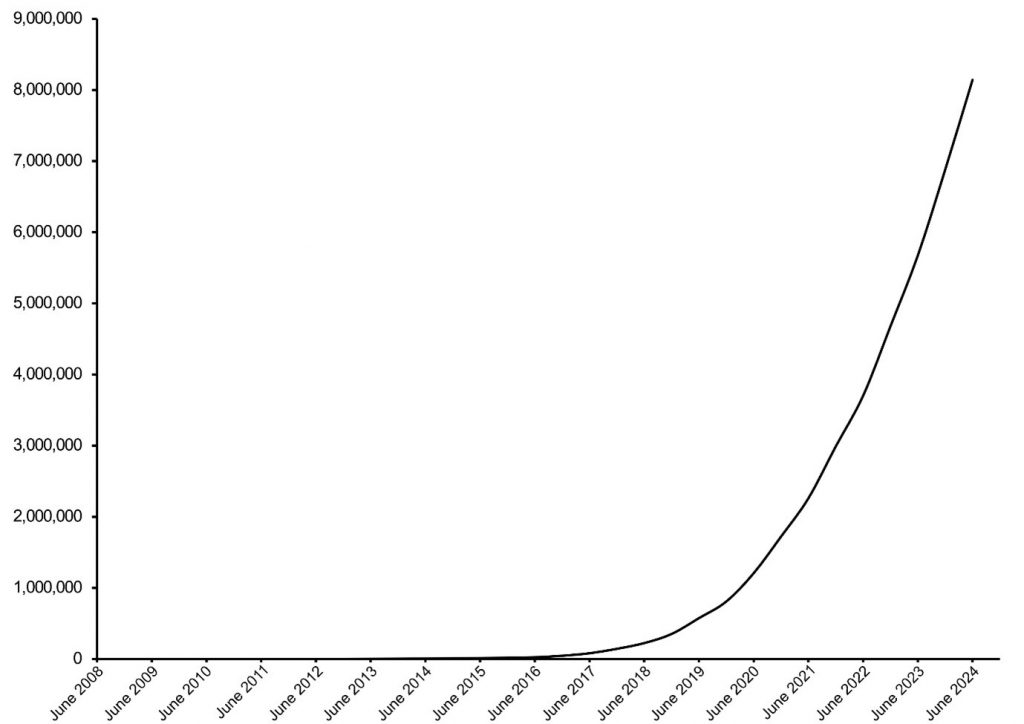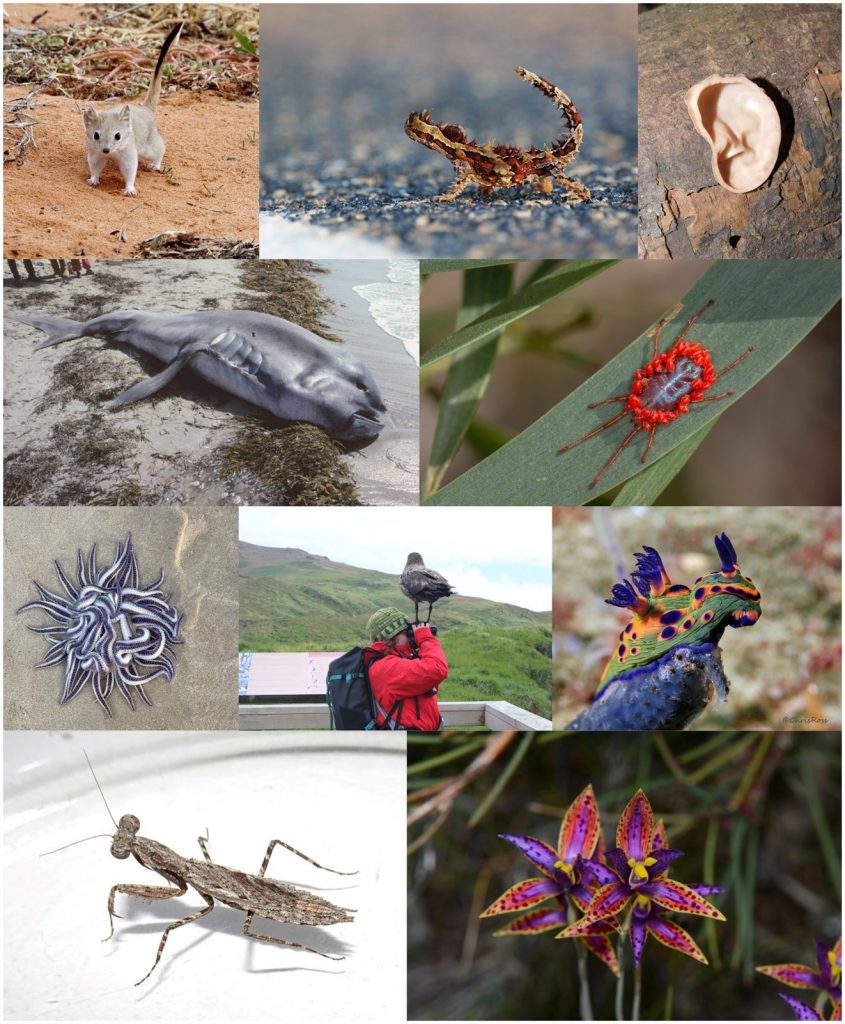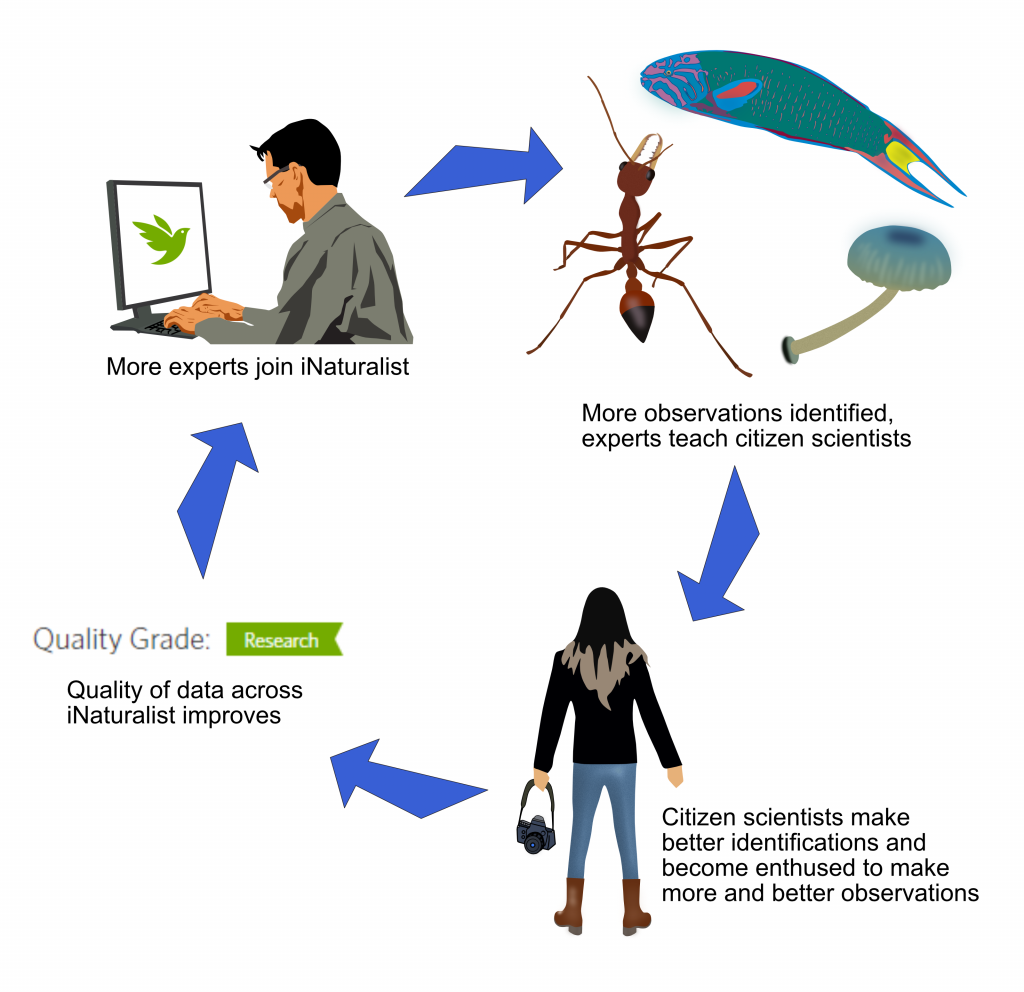After launching internationally in 2008, iNaturalist has blossomed into one of the most popular citizen science platforms in the world with more than 214 million observations across approximately 491,000 species, contributed by almost 3.4 million users (as of October 2024).
While these are incredible collective results, it’s safe to say our local iNaturalist Australia node is a heavyweight on the global stage and, as a major contributor to Atlas of Living Australia (ALA) records, we’re celebrating a big milestone this month with iNaturalist Australia’s fifth birthday!
iNaturalist Australia beginnings
Although Australian observations on iNaturalist date all the way back to 2008, things were slow going for the first eight years. Records started to accumulate faster in late-2016 after the creation of the Australasian Fishes project, but it wasn’t until late-2019 that things really took off. This kickstart to the exponential rise of observations for Australia was no coincidence: it marked the official launch of iNaturalist Australia as a node of the iNaturalist Network, with the local node run by the ALA.
To celebrate this five-year anniversary, we’ve summarised just some of what the iNaturalist community in Australia has achieved.

Some quick statistics
Australia is one of the most significant contributors to iNaturalist globally, punching well above our weight relative to our population. We rank third in the world for the number of observations, second for the number of species (behind only the United States), and first in the southern hemisphere across all key metrics. As of October 2024, there are more than 9 million Australian observations on the platform across approximately 60,000 species, contributed by 100,000 users. Importantly, more than 34,000 users have contributed identifications to Australian iNaturalist observations.
The most observed Australian species is the Australian Magpie, with almost 35,000 observations, followed by the Laughing Kookaburra, Koala, Superb Fairywren and Rainbow Lorikeet. The most observed major group, however, is plants with 2.85 million observations, followed closely by insects with 2.51 million observations.

1. Ampurta (Dasycercus hillieri), a carnivorous marsupial found across central Australia. Photograph by Yingyod Lapwong (@charliev), CC BY-NC.
2. Thorny Devil (Moloch horridus), one of Australia’s most famous reptiles. Photograph by John Sullivan (@sullivanribbit), CC BY-NC.
3. Jelly Ear (Auricularia auricula-judae), a very appropriately named fungus! Photograph by Charmaine Thomas (@charmainet), CC BY-NC.
4. Megamouth Shark (Megachasma pelagios), a rare deepwater shark species. This was an invaluable historical record of a beach-cast specimen from 1988! Photograph by Glenn Moore (@gmoo), CC BY-NC.
5. Miteception: Rainbowia sp. mite with parasitic larval erythraeid mites. Photograph by Andrew Allen (@andrew_allen), CC BY.
6. Dofleinia armata, an alien-like sea anemone. Photography by @thero-pod, CC BY-NC.
7. Brown Skua (Stercorarius antarcticus) taking a break on Macquarie Island. Photograph by Kate E. Sutherland (@pterodroma), CC BY-NC.
8. Donut Nembrotha (Nembrotha rosannulata), one of the more colourful nudibranchs getting around. Photograph by Chris Ross (@chrisross), CC BY-NC.
9. Inimia nat, a newly described genus and species of preying mantis discovered through iNaturalist. Photograph by Glenda Walter (@glendawalter), CC BY-NC.
10. Eastern Queen of Sheba (Thelymitra speciosa), an iconic Western Australian orchid. Photograph by Michael Keogh (@bushbandit), CC BY-NC-SA.
Why was the ALA-iNaturalist Australia partnership so important?
By hosting iNaturalist Australia, the ALA sparked greater recruitment of two key demographics. First, more observers joined the platform, accelerating the accumulation of records. It took six years for Australia to reach 10,000 total iNaturalist records from 2008─2014 but now more than 10,000 new Australian records are uploaded to the platform every single day, and the number of observations uploaded to the site continues to grow exponentially.
Second, the ALA’s support of iNaturalist prompted many more experts to join the platform and contribute their expertise and knowledge, which has been crucial for improving data quality.

How is your data being used?
iNaturalist data are used extensively in conservation planning, land management, and thousands of scientific journal papers around the globe. In Australia, iNaturalist records feed directly into the ALA, allowing researchers all around the country to access the data at any time. Australian iNaturalist records are being used for a wide range of exciting and important research, including understanding the effects of bushfires on biodiversity, monitoring species of biosecurity concern, quantifying habitat composition from images, rediscovering long unobserved species, and even discovering, and facilitating the description of, undescribed genera and species.
How can I get involved?
You can use iNaturalist through a browser on your computer or via the mobile phone app: check out our in-depth guide to get you started. iNaturalist Australia is the fastest growing citizen science platform in the country, so there’s no better time to join than now! The achievements to date have all been thanks to the dedicated and passionate people observing, identifying and curating observations of Australia’s amazing biodiversity.